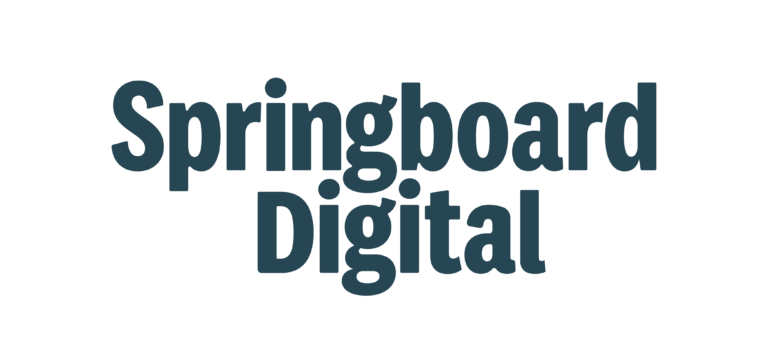When Performance Max campaigns were announced in 2020, the business world shook. Will fully-automated campaigns affect the advertising industry? Do I still need a digital agency? Can I set-and-forget my Google Ads?
In November 2021, when we were finally able to experiment with our new Google Ads toy, it quickly became clear Performance Max isn’t fully automated, and digital agencies are still as important as ever. Fast forward to now, we’ve had even more time to understand the nitty-gritty details.
65% of small-medium businesses use Google Ads, which means Performance Max is highly relevant for a lot of businesses out there. Before you switch up your PPC strategy, it’s important to understand how it works and what is right for your business and digital goals.
This blog article touches on all things Performance Max, including:
- How do Performance Max campaigns work?
- When to use Performance Max campaigns
- How agencies can help
- Key features
- Pros
- Cons
- What happens if you forget to upgrade to Performance Max
What are Performance Max Campaigns on Google Ads?
Performance Max is a new campaign type that, as the name suggests, is focused on maximising performance. It was released to the public in November 2021 and is now becoming more commonly used amongst marketers and businesses worldwide.
Performance Max campaigns are unlike any other campaign type on Google because they show ads across the entire Google Network. This means through one campaign, you can show ads on Google’s Search Network (Search, Maps, Shopping) and their Display Network (YouTube, Gmail, and millions of websites that partner with Google).
How Do Performance Max Campaigns Work?
Performance Max Campaigns are exciting because they operate differently to all existing Google Ad campaign types. They use levels of automation and machine learning we’ve never seen before, and take a well-rounded approach to the entire Google Network rather than being niched to just Search or Display.
Let’s take a closer look:
Automation and Machine Learning
The biggest thing that sets Performance Max campaigns apart from existing Google Ad campaign types is its heavy reliance on machine learning (ML) and automation.
When you set up your Performance Max campaign you input a certain amount of information, including your objective, campaign goal, locations, ad extensions, budget, bid strategy, safety settings, and asset groups. Asset groups include creative imagery and/or videos, and various forms of ad copy.
Google does the rest (to a point… stay tuned). From here, Google picks and chooses from the options you’ve provided to deliver specific and unique ads to the right people, on the right platform, at the right time.
It’s important to note that ML isn’t instant. Marketers have found there’s a definite 6-8 week learning period before you’ll start to see results and stable performance. Moral of the story is, don’t be disheartened if you don’t see immediate results as you might with other campaign types. Your results will be as good as the data and guidance you give your Performance Max campaign, which comes from time and continual information input.
Utilises the Entire Google Network
Performance Max campaigns show ads across the entire Google Network, ensuring your business is getting in front of the most valuable traffic on the right platform, at the right time. Let’s touch on Google’s two networks, Display and Search, in a little more detail.
The Display Network shows ads on YouTube, Gmail, and a potential 200 million websites that partner with Google – they’re some the ads you might see when you’re reading the morning news online or watching a YouTube video. Display Ads target Top-Of-Funnel (TOF) audiences, because they’re shown to website users who are browsing the internet without the specific intent to purchase your products or services. They’re still shown to very relevant audiences, but place more emphasis on brand awareness.
The Search Network shows ads on the Google Search results page, Google Maps, and Google Shopping. They’re usually the first three website results in Search results and featured Shopping products, both of which are indicated by ‘Ad’ tags. Search Ads target Middle- (MOF) and Bottom-Of-Funnel (BOF) audiences, because their search queries have triggered your business, product, or service in their search results. You are the answer to their question.
Performance Max campaigns show ads across both the Display and Search Networks. It means your campaign is a synchronised approach to advertising that will target the right audiences with the right ad-type at the right time, eventually driving them to the bottom of the marketing funnel where their intent is high and they’ll convert.
Ongoing Optimisations
Although they use machine learning and automation, Performance Max campaigns aren’t a ‘set and forget’ situation. Your results will only be as good as the data you give it throughout the campaign’s duration.
Important data to input and update includes audience signals, your campaign goal, creative assets, and more. Think about ongoing campaign optimisations as the equivalent to bowling guardrails. Without the guardrails your ball could easily go off course and miss the pins, whereas with the guardrails up you’re able to gently guide it to hit the target.
Say, for example, your Performance Max campaign goal is optimised for views of your Landing Page. This is a good idea initially, as it encourages the ML to test a wide audience and generate data initially. However, if you leave your campaign to keep driving for Landing Page Views, the ML will eventually reach a point of stagnancy and the quality of your conversions won’t be great. Here, we recommend updating your campaign goal to Leads or Purchases to encourage the model to find more users that are more likely to perform an action that matters to your business, therefore improving the quality of your conversions. This is where agency assistance is extremely important.
When to Use Performance Max Campaigns:
According to Google, Performance Max is the best Google Ads campaign type to use when:
Your Ads aren’t Limited to a Specific Channel
If your campaign is flexible and it doesn’t necessarily matter which channel your ads appear on, Performance Max can help maximise your performance. If your campaign needs to be shown on specific channels or has budget or time constraints, we don’t recommend Performance Max.
You Have Specific Conversion Goals
For example, driving online sales or lead generation. Performance Max is the most goal-oriented Google Ads campaign type to date.
You Want Additional Reach or Conversions
Performance Max helps you reach more people beyond keyword-based Search campaigns, which can mean more conversions.
How Digital Agencies Can Help
Although it’s true Performance Max campaigns use ML and algorithms, it’s also true they still require a heap of maintenance, guidance, input, attention, and love. Digital agencies can be super helpful in managing your campaign, particularly when you consider the vast amount of inputs and optimisations required to achieve the results you want.
Here is a list of Performance Max campaign inputs to look out for, or to think about getting a digital agency to help with:
Campaign Goals
Campaign Goals tell Google what you’re trying to achieve with your campaign, and help ML and algorithms optimise towards it to get you the results you want. In a Performance Max campaign, your goal may change over time to guide the ML.
Agencies are skilled at knowing which campaign goals are right for you, and optimising them over time to prevent decreased performance. Some campaign goals include Sales, Leads, Website Traffic, Brand Awareness, and Local Store Visits.
Bid Strategy
Targeting in Performance Max campaigns is also dependent on bid strategy. Every time someone searches for one of your keywords on Google, you compete in a mini auction with any other advertisers bidding on the same keyword to get your ad to show. If you bid too high every time, your budget will burn quick but if you bid too low, your ads won’t show most of the time.
Google has a range of smart bidding strategies to pick from in Performance Max campaigns based on what sort of audiences you want your ads to show for and how much you’re willing to spend on a conversion. A huge part of an agency’s job while running your campaign is to ensure your ads are using the correct bid strategy in alignment with conversion data and business goals.
Audience Signals
Audience signals are an entirely new and powerful way to find potential customers on Google. In the past, Google Ads only let advertisers target audiences directly, or observe them for possible performance differences.
The new Audience Signals system allows you to tell the ML model which people are important to your business, and it will then look at user data and find people similar to these people.
This means each Performance Max campaign can leverage your business’ first party data to actively find new customers and guide them down the sales funnel to making a purchase.
Inputting valuable Audience Signals during your campaign set-up is important to help jumpstart initial performance, but must also be optimised regularly to guide the ML. An agency’s job is to analyse data for opportunities to pair certain products, ad copy, images, and videos to specific Audience Signals.
Asset Groups
Asset Groups are a set of creatives (text, images and videos) used to create an ad depending on the channel it’s being served on. Although you’re responsible for providing your agency with imagery and videos, agencies are skilled at strategically writing ad copy and organising assets into themed groups that will compliment whatever your campaign goal is.
Location Targeting
Location Targeting is a setting that dictates the geographical location your ads are shown, as well as those where they shouldn’t. Although it’s important to not rely on geo-targeting too strongly, agencies are helpful at ensuring certain locations are excluded from your campaigns to optimise performance.
Optional Data Feeds
Optional Data Feeds are just that – optional additional data you can link to your Google Ads account to help personalise your ads for individuals. They include your Google Business Profile, Google Merchant Center, Dynamic Ads Feed, and Business Data Feeds. Agencies are skilled at setting up accurate data tracking and linking the Data Feeds to your account, which ensures data accuracy and more effective ads overall.
Ad Extensions
Ad Extensions add additional information to your ad, giving people more reasons to choose your business and most likely improving your Click-Through-Rate (CTR). Agencies are skilled at knowing which extensions, such as call buttons, links to specific website pages, or location information, will help support your campaign goal and get results.
Brand Safety Settings
Brand Safety Settings is where you control content exclusions and display options. Agencies are helpful for ensuring your ads aren’t displayed alongside certain categories of websites or videos that your brand doesn’t align with, which could have detrimental impacts for your reputation and campaign performance.
Key Features of Performance Max Campaigns:
Performance Max campaigns are shaking up the Google Ads landscape for lots of reasons. Here are a few key features of Performance Max campaigns (besides ML) that deserve some extra attention:
New Customer Acquisition Goal
Google has added a new Customer Acquisition campaign goal option in Performance Max campaigns. This option is best when you want to get your business in front of entirely new customers, which helps grow your business and drive longer term revenue.
The Customer Acquisition goal has two modes:
- Bid higher for new customers than for existing customers → this mode is recommended by Google because it lets you maximise revenue across all customers, but also drive more new customers with your business within a single campaign.
- Only bid for new customers → Google recommends using this mode when you have acquisition-focused budgets or if you’re running a campaign that isn’t focused on conversions, such as lead-gen.
Audience Signals
Audience Signals are audience suggestions you add to your Performance Max campaign that help enhance its ML. This is because they help direct your campaign towards people more likely to convert, which in turn helps the automation learn how to optimise for your selected goals.
Inputting helpful Audience Signals during your campaign set up is crucial to jumpstart it from the get go. It’s like starting a huge hike with a detailed map, rather than a rough sketch of the surrounding landscape. Throughout your campaign’s duration it’s extremely important to update and add to your Audience Signals to keep guiding your campaign in the right direction.
Audience Signal types you can add to your campaign include:
- Custom segments → created by you based on people’s behaviours, such as websites people have visited or keywords they’ve searched
- Demographics → including age, status, gender, and more
- Interests → things and events that people have expressed interest in
- Retargeting lists → people who’ve already engaged with your digital presence
Improved Insights: Diagnostic Insights
Diagnostic Insights are an incredible new tool that help highlight and identify issues in your campaign that may be preventing conversions. At the moment, it’s only available for Performance Max campaigns.
Diagnostic Insights will only show when your campaign isn’t getting any conversions or traffic, but is always monitoring performance in the background. As well as highlighting potential issues that could be limiting your campaign’s ability to serve, it’ll provide recommendations to fix the issues.
According to Google, issues highlighted by Diagnostic Insights include but aren’t limited to:
- Account budget exhausted
- Account suspended
- All assets, or just some, disapproved
- CPA target too low
- ROAS target too high
- Inactive asset group
- Inactive campaign
- Low account budget
- Low ad strength
- No active billing method
- Outstanding payment balance or payment declined
Improved Insights: Asset Audience Insights
Asset Audience Insights help you understand how well different audience segments respond to your ads. For example, an eCommerce fashion business might discover people respond better to ads with photos of models wearing the clothing as opposed to ads with just product photos.
It also helps reveal the unique characteristics, interests, and behaviours of those who convert on your ads. This data is super important for knowing your customers and improving your future strategy (on Google and as an overall business), which will help you get better results.
At the moment, Asset Audience Insights is in its Beta phase and only available to some users. We expect to see it roll out to everyone soon.
Pros of Performance Max Campaigns
Some key benefits of Performance Max campaigns are:
Access to the Whole Google Network
Have it all with Performance Max. If your images and ad copy are suitable for the entire Google Network, you can simplify your life by using just one Performance Max campaign to access the lot. Professionals are saying it takes your keyword based campaigns to the next level, as Google’s ML will deliver the right combination of assets to the right people, on the right platform, at the right time.
Automation
Performance Max is the most ML and automation-oriented Google Ads campaign type yet, and that’s saying something! After you provide unique inputs, Google’s systems find potential customers and serve them the most appropriate ad with an optimal bid. This means someone more likely to convert through a YouTube Ad would be served a video on that channel, whereas someone else could be served a Display ad made of different assets.
Automation also extends to Google’s bidding and targeting systems. This is said to help you invest your budget more efficiently depending on your business goal by spending where the highest Return-On-Investment (ROI) opportunities are.
Of course, Google has repeatedly emphasised the importance of regular manual optimisations to help the ML make more accurate predictions about which ads, audiences, and creative combinations perform best. Contrary to popular belief, Performance Max campaigns are not a ‘set and forget’ situation.
More Targeted Creative
Performance Max uses automation and ML to deliver people unique, creative ads that are more likely to make them convert. Although it’s your job to provide Google with high-quality, relevant and engaging content, Google’s ML mixes and matches the right combination of assets to the right people, on the right platform, at the right time. Personalised marketing at its finest.
Better Data Insights
The new and improved insights available on Performance Max help you understand which creatives are impacting performance and help you optimise them to improve ROI. For example, they might reveal videos perform more effectively than images, so you can input more videos to encourage more conversions.
Data insights are helpful to inform not only your campaign, but your broader business strategy. You might glean rising search trends to leverage in blog posts, or notice changes in performance that inform which products you promote heavier on other digital platforms. You could also be surprised by unlocking a completely untouched, high-converting audience to focus on in the future.
Goal Focused
Performance Max achieves your specific goals using ML and automation, but should be run alongside other ad campaigns to achieve the best results. Inputting your goal strategically upon creating your campaign is very important for guiding the ML and automation towards the right audiences from the get go.
Optimising your goal throughout the campaign’s duration is equally as important. Say, for example, you set your campaign goal as Website Traffic upon setting up. This is an excellent way to reach a larger audience and acquire more data for the ML to work with initially, but if you leave it as your goal you’re unlikely to see high-value conversions. You need to upgrade your campaign goal at the right time to continue guiding the ML to higher value customers. Here, you might want to switch to Sales or Leads to improve performance.
Cons of Performance Max Campaigns:
Loss of Control for Advertisers
Naturally, Performance Max campaigns’ increased reliance on ML and automation means less manual control for advertisers. This is beneficial for Google because it’s easier to spend more money when their systems are in charge, but is not always beneficial to advertisers with specific campaign needs.
Performance Max campaigns still offer lots of personalisation and efficiency, but can feel restrictive compared to other campaign types. Namely, advertisers can’t yet add negative keywords and audiences, or use smart bidding strategies. It’s easy to accidentally spend money on poorly-crafted campaigns, so working with your agency is important.
Scroll up to read ‘When to Use Performance Max Campaigns’ to learn when they’re most suitable for your campaign and business goals.
Unclear Goals Can Result in Ineffective Campaigns
If you’re unclear on your marketing goal, your Performance Max campaign won’t perform to the best of its ability. For this reason, it’s crucial to select a strategic goal from the get-go to encourage Google’s ML in the right direction. It’s equally as crucial to optimise your goal throughout the campaign’s duration to continue guiding the ML towards specific results.
Be clear with your agency about what you want to achieve with your campaign.
Limited Performance Visibility
As the new campaign-type on the block, Performance Max has cool new reporting insights but is still missing plenty of important campaign visibility. For example, it’s difficult to extract data on asset combinations or campaigns, which is frustrating because you can’t fully understand what’s working best and, therefore, what channels and asset types you should prioritise for stronger performance.
We expect Google to build on Performance Max’s reporting features over time, but it may be a while until advertisers can access the levels of detailed data they’re used to.
Search Term Control
Currently, there is no easy way to add negative keywords to Performance Max (keywords you don’t want your ads to show for). This can sometimes mean that other campaigns running in your account are “cannibalised” by Performance Max, requiring shifts in budgets and the potential pausing of campaigns which can no longer compete against Performance Max.
Our PPC Expert’s Take on Performance Max:
“Performance Max introduces a very exciting new era of advertising. It changes the role of an agency from spreadsheets filled with endless search terms and bid adjustment formulas, to one of new creative ideas that reach more of the right people. It’s great to see Google finally creating a tool that takes full advantage of all of the possible ad placements and showing each user the right ad at the right time.
At Springboard, we’re excited about Performance Max campaigns. They work really well (often a 10-20% increase over Smart Shopping), and they allow for a future of expanding the reach of smaller businesses into possibly unexpected parts of the market.”
Trevor Anderson, August 2022
What Happens If I Forget to Upgrade to Performance Max?
Google is automatically upgrading Google Smart Shopping and Local campaigns to Performance Max by September 2022. This means if you don’t do so yourself by this time, Google will do it for you.
We recommend getting your digital agency to upgrade you to Performance Max (if it supports your digital marketing goals) or doing it yourself to ensure your digital marketing strategy isn’t unexpectedly affected by the swap. Remember the automatic upgrade tool doesn’t take advantage of all of the placements and will require some extra configuration. Stay ahead of the game.
Now that we’ve loaded you up with information, let’s wrap it up.
Final Tips & Notes
If you want to grow your business, Google Ads is the place to invest. It’s an extremely powerful marketing tool for gaining brand awareness and generating conversions, regardless of how small your business is or what industry you compete in. As we’ve seen with Performance Max, Google’s constantly working to improve their Ad systems to help you get better results.
Of course, it’s all good and well to run Google Ads effectively when you’re also running a business and trying to maintain a social life and get 8hrs of sleep. At Springboard, we specialise in helping small-medium businesses achieve digital success with affordable, high-quality digital marketing.
If you’re ready to get started with Google Ads, or want to improve your current PPC performance, reach out to the Springboard Digital team today. We’re always available to help you achieve your goals!






